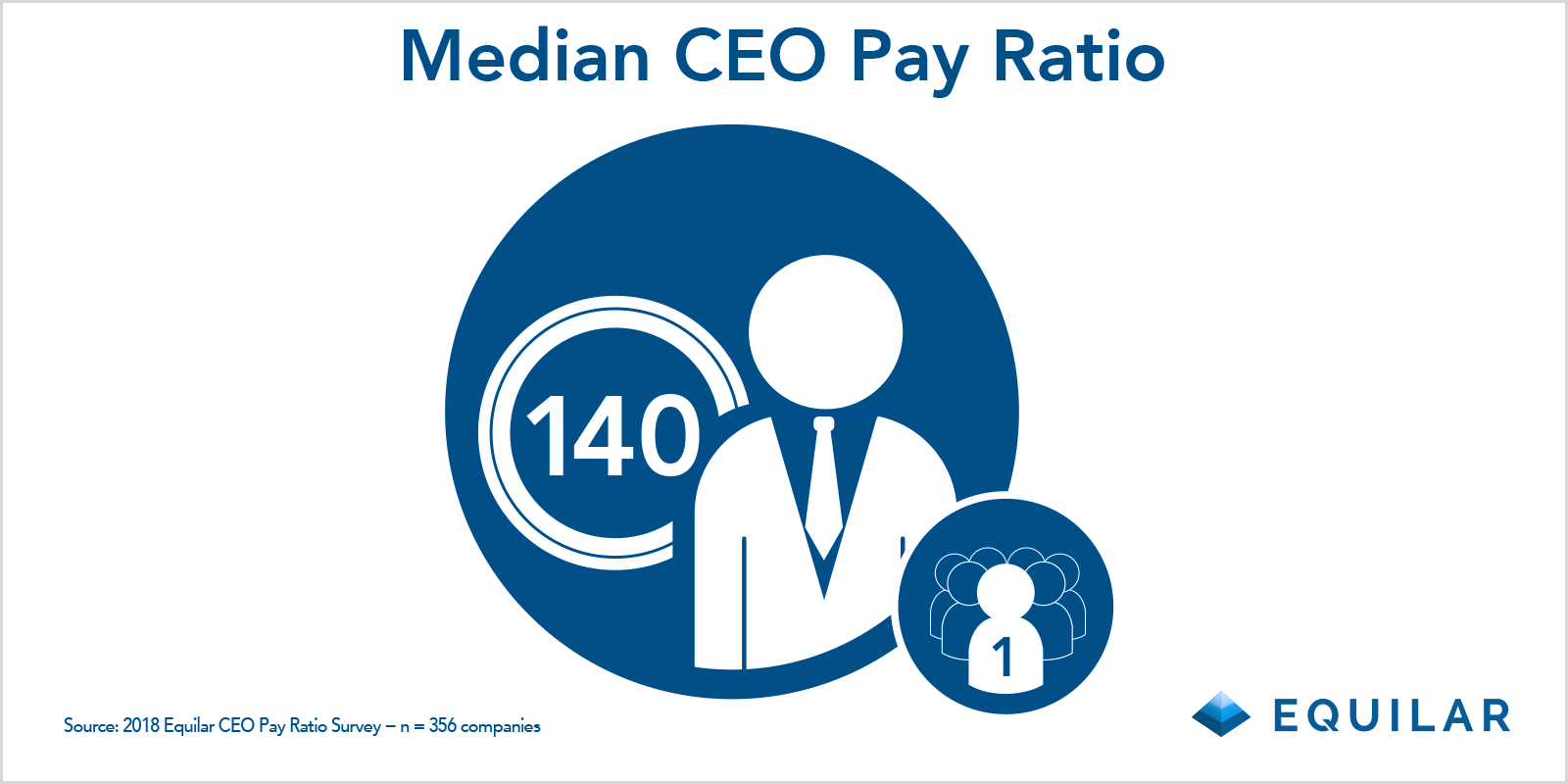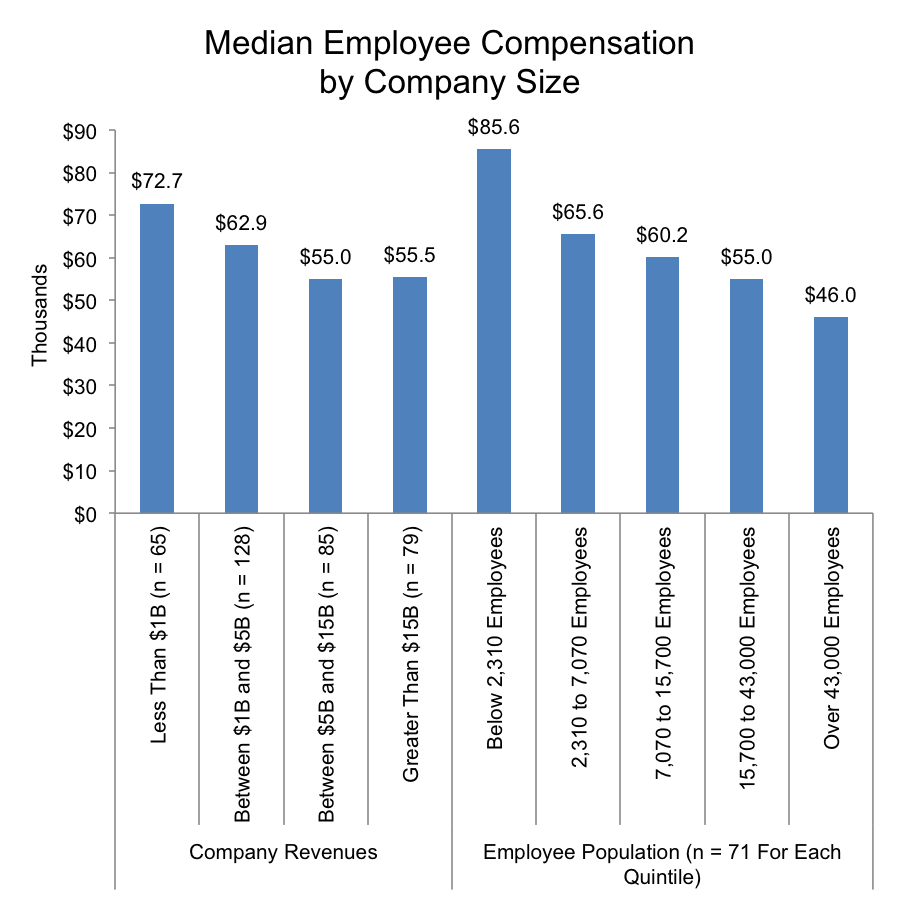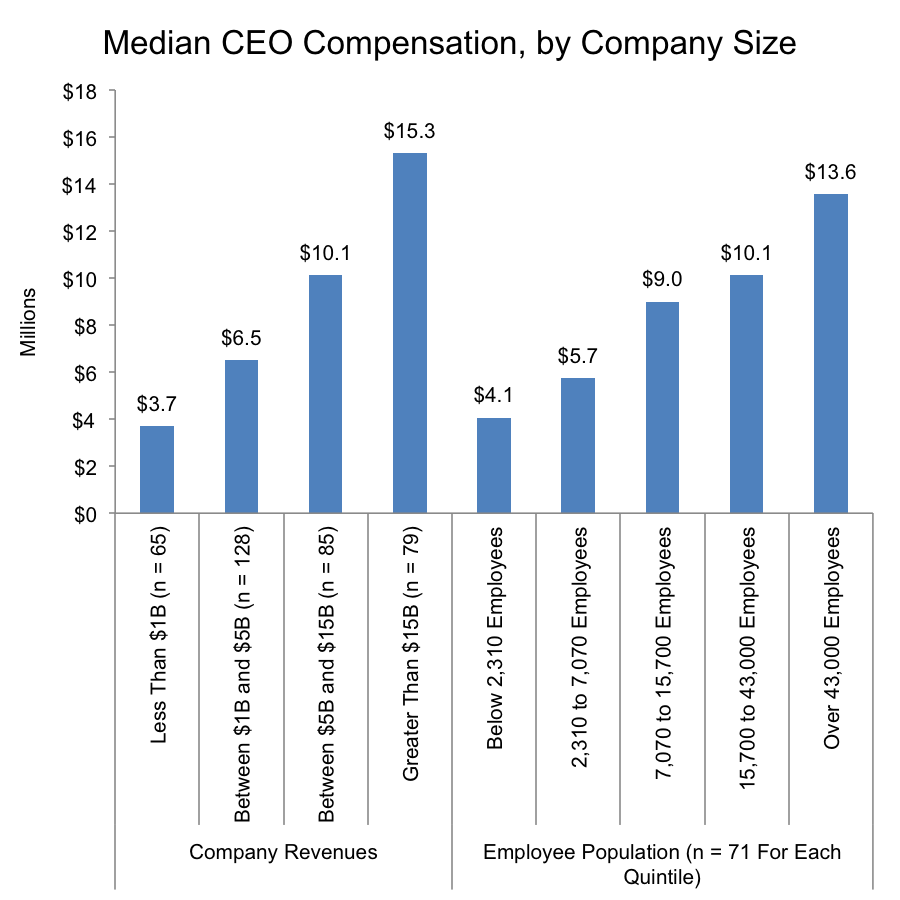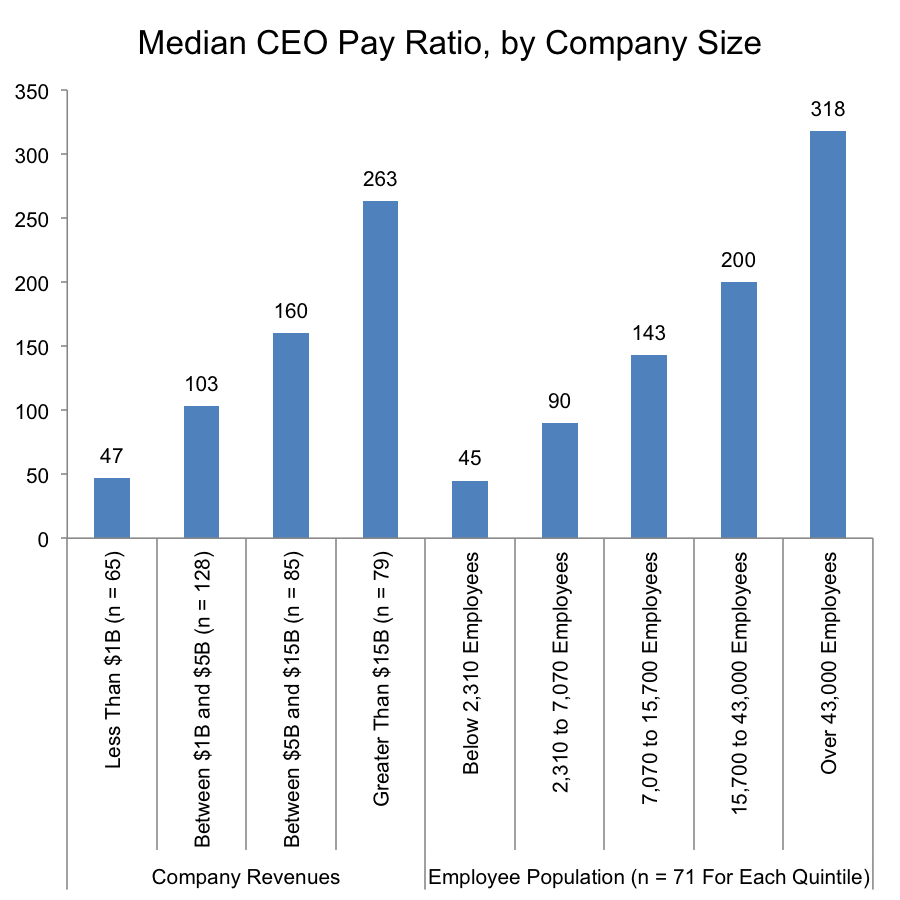Equilar Institute
Blog Home
CEO Pay Ratio Survey Results: The Bigger the Company, the Larger the Pay Gap

February 1, 2018
Eight years following the passage of Dodd-Frank, public companies will be required to disclose their CEO Pay Ratios in 2018 proxy statements. One of the most—if not the most—controversial executive compensation provisions from the financial regulatory act, the CEO Pay Ratio directly compares CEO total compensation to that of a company’s median employee. While CEO compensation has been available in public filings and is well-documented, total compensation of a company’s median employee will also be required disclosure under the new SEC rule and available for the first time.
To gain insight into the range of ratios and employee pay marked for disclosure during proxy season, Equilar conducted a survey* of both CEO Pay Ratios and median employee compensation. In total, 356 companies participated in the survey.
Overall, the median ratio of these companies was 140:1, but of course, ratios differed widely depending on various analyses of the data. One of the survey’s main findings—that pay gaps are wider at the largest companies—may not be surprising. However, not only are the largest companies paying their executives more, compensation for median employees is also lower. The data and analysis in this blog explore why that’s the case.
Median Employee Compensation Is Lower When Company Size Increases
After categorizing survey companies into ranges by revenue and employee population (i.e. workforce size), a couple of clear patterns emerged. As company size increased by either metric, median employee compensation (at the median) was lower. Generally speaking, this inverse relationship between company size and employee pay helped drive ratios upward at larger companies. Survey companies reporting revenues less than $1 billion yielded a median $72,700 for median employee compensation, while those over $15 billion in revenue reported a median of $55,500 (just slightly over the median of $55,000 for companies between $5 billion and $15 billion).
Similarly, survey companies comprising the first quartile of employee population (less than 2,310 employees) reported a median $85,600 for median employee compensation, while those over 43,000 employees yielded a median $46,000.
CEO Total Compensation Is Higher as Company Size Increases
A less-surprising corollary to the phenomenon observed with median employee pay occurs with CEO pay. As companies get larger by either revenue or employee population, so too does the total compensation of the median CEO in each respective category. Median total compensation for CEOs at the smallest companies by revenue was $3.7 million, and climbed to a median $15.3 million at the largest companies by revenue. In parallel, median CEO pay at companies with the fewest employees was $5.7 million, in comparison to a median $13.6 million at the largest companies by employee population. It stands to reason that with lower median employee compensation and higher CEO pay, larger companies would also report higher CEO Pay Ratios—and indeed that was the case.
Bigger Companies Report Bigger CEO Pay Ratios
Indeed, the trends of lower employee and higher CEO pay yielded higher CEO Pay Ratios at larger companies. The CEO Pay Ratio increased at the median with growing revenues, ranging from 47:1 at the smallest companies to 263:1 at the largest. Similarly, survey companies with the fewest employees reported a median CEO Pay Ratio of 45:1, while those with the most employees reported a median 318:1.
That the CEOs of larger companies tend to receive larger pay packages should come as little surprise to anyone who follows proxy-filing trends. Conversely, the survey data also show that, generally, greater organizational size and complexity put downward pressure on median wages within the center ranges of those workforces. Simultaneously scaling both CEO pay levels and organizational size seems to drive a wider gap between the CEO and median employee, which results in higher pay ratios at the median.
Highlighting trends in median employee and CEO pay, and the resulting CEO Pay Ratios, points to the necessity of apples-to-apples comparisons should such comparisons between companies be made. According to the SEC, the CEO Pay Ratio rule is not intended to yield comparable numbers across companies, though it’s likely that certain stakeholders may assess ratios and employee pay through such a benchmarking lens. Larger companies that award higher levels of CEO pay should be mindful of their median-eligible population, while smaller companies may find a low ratio places them squarely among peers.
*Source: 2018 Equilar CEO Pay Ratio Survey – n = 356 companies
Click here to download a complimentary executive summary of the CEO Pay Ratio Survey results.
Matthew Goforth, Senior Governance Advisor at Equilar, authored this post. Please contact Dan Marcec, Director of Content & Communications, at dmarcec@equilar.com for more information on Equilar research and data analysis.
 Solutions
Solutions















